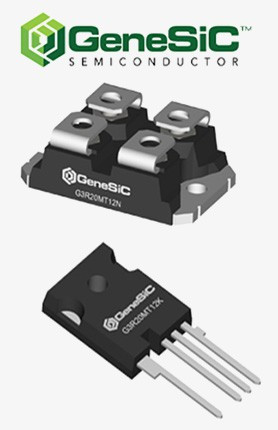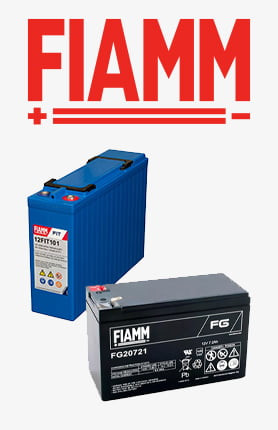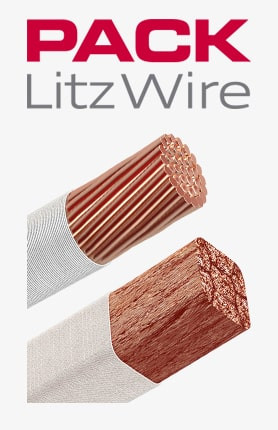Морате бити пријављени да
-
moreX
-
Компоненте
-
-
Category
-
Полупроводници
- диоде
- Тиристори
-
Електро изоловани модули
- Електро изоловани модули | ВИСХАИ (ИР)
- Електро изоловани модули | ИНФИНЕОН (ЕУПЕЦ)
- Електро изоловани модули | Семикрон
- Електро изоловани модули | ПОВЕРЕКС
- Електро изоловани модули | ИКСИС
- Електро изоловани модули | ПОСЕИЦО
- Електро изоловани модули | АББ
- Електро изоловани модули | ТЕЦХСЕМ
- Go to the subcategory
- Мостовни исправљачи
-
Транзистори
- Транзистори | GeneSiC
- SiC MOSFET модули | Mitsubishi
- SiC MOSFET модули | STARPOWER
- АББ СиЦ МОСФЕТ модули
- IGBT модули | MITSUBISHI
- Транзисторски модули | MITSUBISHI
- MOSFET модули | MITSUBISHI
- Транзисторски модули | ABB
- ИГБТ модули | POWEREX
- ИГБТ модули | ИНФИНЕОН (ЕУПЕЦ)
- Silicijum-karbidni poluprovodnički elementi
- Go to the subcategory
- Гате Дриверс
- Блокови напајања
- Go to the subcategory
- Električni pretvarači
-
Пасивне компоненте (кондензатори, отпорници, осигурачи, филтери)
- Otpornici
-
Osigurači
- Minijaturni osigurači za elektronske sisteme serije ABC i AGC
- Cilindrični brzi osigurači
- Osigurači sa odloženim delovanjem GL/GG i AM karakteristika
- Ultra-brzi osigurači
- Brzi osigurači sa britanskim i američkim standardom
- Brzi osigurači sa evropskim standardom
- Vučni osigurači
- Visokonaponski osigurači
- Go to the subcategory
-
Kondenzatori
- Motorni kondenzatori
- Elektrolitski kondenzatori
- Kondenzatori - snubberi
- Energetski kondenzatori
- Kondenzatori za DC kola
- kondenzatori za kompenzaciju snage
- Visokonaponski kondenzatori
- Kondenzatori za indukciono grejanje
- Impulsni kondenzatori
- ДЦ ЛИНК кондензатори
- Кондензатори за АЦ/ДЦ кола
- Go to the subcategory
- EMI filtri
- Superkondenzatori
- Заштита од пренапона
- TEMPEST филтери за откривање емисије
- Одводник пренапона
- Go to the subcategory
-
Releji i kontaktori
- Теорија релеја и склопника
- Trofazni poluprovodnički releji
- Трофазни полупроводнички релеји наизменичне струје
- Регулатори, команде и додаци
- Sistemi za meki sart i reverziblni kontaktori
- Elektromehanički releji
- Kontaktori
- Rotacioni prekidači
-
Једнофазни полупроводнички релеји наизменичне струје
- Једнофазни релеји наизменичне струје, 1 серија | Д2425 | Д2450
- Jednofazni poluvodički izmjenični releji CWA i CWD serije
- Jednofazni poluvodički izmjenični releji CMRA i CMRD serije
- Jednofazni poluvodički izmjenični releji - serija PS
- Двоструки и четвороструки полупроводнички релеји наизменичне струје, серије Д24 Д, ТД24 К, Х12Д48 Д.
- Jednofazni poluvodički releji - gn serije
- Jednofazni kružni releji Ckr serije
- Jednofazni AC poluvodički releji za DIN sabirnice - ERDA I ERAA serija
- 150A AC jednofazni releji
- Čvrsti releji s ugrađenim hladnjakom na šini - ENDA, ERDA1 / ERAA1 series
- Go to the subcategory
- Monofazni poluprovodnički releji za štampane ploče
- Интерфејс релеји
- Go to the subcategory
- Indukcione komponenete
- Radijatori, Varistori, Termička zaštita
- Ventilatori
- Klimatizacija, Pribor za industrijska kućišta, Kuleri
-
Батерије, пуњачи, бафер напајања и претварачи
- Батерије, пуњачи - теоријски опис
- Litijum-jonske baterije. Nestandardne baterije. Sistem za upravljanje baterijom (BMS)
- Baterije
- Punjači i dodaci za baterije
- UPS i puferski izvori napajanja
- Pretvarači i dodaci- fotonaponski
- Складиште енергије
- Гориве ћелије
- Литијум-јонске батерије
- Go to the subcategory
- Automatika
-
Kablovi, Licnaste žice, Kablovski kanali, Fleksibilne veze
- жице
- Кабловски уводи и спојнице
- лицнастим жице
-
Каблови за специјалне намене
- Продужни каблови и компензацијом
- Каблови за термопарова
- Прикључни жице за цзијнков ПТ
- Мултицоре цаблес темп. -60 ° Ц до + 1400 ° Ц
- СИЛИЦОУЛ средње каблови
- Игнитион жице
- грејни каблови
- Сингле цоре темп. -60 ° Ц до + 450 ° Ц
- траин проводници
- Грејни каблови у Ек
- Каблови за одбрамбену индустрију
- Go to the subcategory
- схиртс
-
плетенице
- браидс флат
- плетенице коло
- Врло флексибилан плетеница - стан
- Врло флексибилан плетеница - коло
- Бакар плетена цилиндрични
- Бакра плетеница штит и цилиндрични
- Флексибилни уземљење траке
- ПВЦ изолацијом бакарне плетенице - Температура 85 ° Ц
- Стан плетени алуминијум
- Цоннецтион Кит - плетенице и цеви
- челичне плетенице
- Go to the subcategory
- Прибор за вучу
- папучица
- Флексибилни исолатед сабирнице
- Вишеслојна флексибилан шина
- системи за управљање кабл
- Go to the subcategory
- View all categories
-
Полупроводници
-
-
- Suppliers
-
Applications
- Automatika industrijska
- CNC alatni strojevi
- DC i izmjenični pogoni (pretvarači)
- Energy bank
- Indukciono grejanje
- Industrijski zaštitni uređaji
- Istraživanje i laboratorijska merenja
- Mašine za sušenje i obradu drveta
- Mašine za termoformiranje
- Merenje i regulacija temperature
- Motori i transformatori
- Oprema i dijelovi za opasna područja (EX)
- Oprema za centrale, kontrolne ormare i telekomunikacije
- Poligrafija
- Rudarstvo, metalurgija i livnica
- Tramvajska i železnička vuča
- UPS i ispravljački sistemi
- Апарати за заваривање и апарати за заваривање
- Индустријска аутоматизација
- ХВАЦ аутоматизација
-
Инсталација
-
-
Индуктори
-
-
Индукциони уређаји
-
-
Услуга
-
- Kontakt
- Zobacz wszystkie kategorie
Basics of Electromagnetic Compatibility: What It Is and Why It's Important? 1 of 8

Basics of Electromagnetic Compatibility: What It Is and Why It's Important? 1 of 8
Definition of Electromagnetic Compatibility (EMC)
Electromagnetic Compatibility (EMC) is a field of science and engineering that deals with preventing electromagnetic interference and ensuring that electronic devices and systems can operate alongside each other without mutual electromagnetic interference. In short, EMC concerns the ability of devices to function in environments with various sources of electromagnetic disturbances and minimize their impact on other devices.
In today's world, where electronics and communication systems are widely used in various fields such as industry, transportation, medicine, and telecommunications, issues related to EMC are of immense importance. Without proper electromagnetic compatibility, there is a risk of disturbances that can lead to system failures, data loss, and even pose a threat to user safety.
Within the field of Electromagnetic Compatibility, there are standards and regulations that define the minimum requirements for electromagnetic emissions and immunities. Organizations such as the International Electrotechnical Commission (IEC) and the Federal Communications Commission (FCC) develop standards that must be followed to meet EMC requirements. Compliance with these standards allows for effective cooperation between different electronic devices and minimizes the risk of electromagnetic interference.
It is important for manufacturers, designers, and engineers to have an awareness and understanding of Electromagnetic Compatibility and to implement appropriate techniques for designing, testing, and securing devices to ensure their reliability, durability, and compliance with regulations. Through proper EMC practices, the risk of electromagnetic interference can be minimized, thereby ensuring stable and safe operation of electronics in various environments.
Basic Principles of Electromagnetic Compatibility (EMC):
Electromagnetic Compatibility (EMC) is based on several key principles aimed at minimizing electromagnetic interference and ensuring the uninterrupted operation of electronic devices and systems. Here are the basic principles of EMC:

Principle of Emission
This principle concerns controlling the electromagnetic interference emissions generated by devices. Electronic devices can produce various types of electromagnetic signals that can interfere with the operation of other devices. The task of EMC is to limit these emissions by employing appropriate design techniques, shielding, filtering, and other measures to minimize the generation of electromagnetic disturbances.

Principle of Immunity
This principle pertains to the resistance of devices to electromagnetic disturbances originating from other sources. Electronic devices should be resilient to electromagnetic disturbances that may occur in the environment, such as radio signals, electromagnetic fields, or electrical surges. Through proper design, shielding, attenuation, and other techniques, devices can be more resistant to disturbances and maintain their operational integrity.

Principle of Separation
This principle concerns ensuring adequate separation between devices to avoid mutual electromagnetic interference. Devices should be designed and placed in such a way as to minimize interaction between them. Examples of actions consistent with this principle include proper cable and wire arrangement, use of screens and shields, and appropriate spatial planning of electronic systems.
Principle of Control
This principle involves monitoring and controlling the quality of signals and voltages in electronic devices. By monitoring and regulating electrical signals and eliminating unwanted interference, the quality and stability of device operation can be effectively controlled.
Understanding and applying these basic principles of EMC is crucial for designers, engineers, and manufacturers of electronic devices. By adhering to these principles, the risk of electromagnetic interference can be minimized, ensuring reliability, durability, and compliance with regulatory requirements for electronic devices.
The Essence and Significance of Electromagnetic Compatibility (EMC) in Today's Technological Environments:
In today's digital world, where electronic devices and communication systems are an integral part of our lives, the essence of Electromagnetic Compatibility (EMC) is becoming increasingly important. EMC is crucial for ensuring the uninterrupted operation of devices and systems in the presence of diverse sources of electromagnetic disturbances.
The main objective of EMC is to minimize electromagnetic interference, which can cause failures, malfunctions, data loss, or even risk to user safety. The introduction of electromagnetic disturbances can lead to communication interference, instability in device operation, transmission errors, and contribute to performance limitations and improper functioning of electronic control systems.
It is important to understand that in today's technological environments, there are many different sources of electromagnetic disturbances. This may include radio transmissions, telecommunication systems, power grids, electric motors, medical devices, and even everyday consumer electronics. The impact of these disturbances on the operation of other devices can be significant and lead to serious consequences.
Therefore, the significance of EMC cannot be underestimated. Compliance with EMC principles and standards is not only a legal requirement in certain industries but also a necessary condition for ensuring the reliability, durability, and safety of electronic devices. EMC practices allow for the identification, control, and minimization of both electromagnetic emission and immunity disturbances, as well as the appropriate design, testing, and protection of electronic systems.
In the present times, when technology and electronics are integral parts of our professional and personal lives, proper EMC management is incredibly important. It contributes to ensuring the reliability of our devices, minimizing the risk of failures, protecting the health and safety of users, and facilitating stable and efficient operation in diverse environments.
Related product
Related posts
 Now available – DC/DC converters from PREMIUM
Now available – DC/DC converters from PREMIUM
 New release in DACPOL lighting for lathes – Kira covers
New release in DACPOL lighting for lathes – Kira covers





Leave a comment